#37 DHARMA EYE: Part Three—Elegant Decay
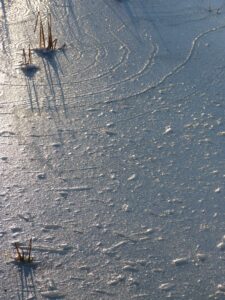
The enduring interest in any artistic production, as I started to address in the previous post, remains a hard thing to pin down, as much as critics might monumentalize it. Why this photo comes to the fore and not that one–I don’t necessarily have a language to describe it. That’s the most interesting thing.
You can object that critics do find ways to describe aesthetic success, and quality critics can do a wonderful job unveiling that for you, as criticism itself becomes a creative process that generates its own artifact, its own work of art at some level. But perhaps with a need to get free of literary criticism, I’ve always liked visual art as a way of reacting intuitively to what’s there in the frame, and it draws me to it or it doesn’t. It’s simple, gut-level. I’m sure some of my pre-conditioning is at work, but then I’m freed from some long exegesis on the right or wrong or failure/success ratio that can be fit into antecedent generations of systematized critical and market evaluations.
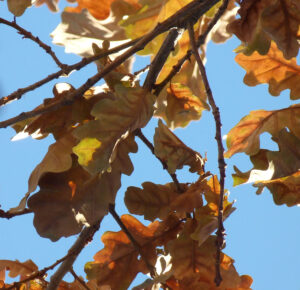
I think you look at the picture, and if it speaks to you in its given language, that means something. You don’t even necessarily know how to speak that language, but you can feel it flashing into your innards, however far, from whatever angle.

That’s what you’re looking for as you frame what you’re seeing, and the seeing has to have some felt resonance–fully conscious, semi-conscious, or who knows? The framing holds enough of it, limits it in an obvious sense, bringing a window quite possibly on what you already see and know, but maybe you don’t normally recognize that you see it.
In November, after a solitary retreat I did at my home over the Thanksgiving week, I finished up early Sunday afternoon, and got out as the sun got late (around 3:30) to shoot pictures of mainly branches and dead leaves. Trees have the grace to process decay and death with elegance, now veining space with their essential forms, locked into a kind of stasis of chi, revealing its naked expressiveness come out of ground and reached into sky. Trees revisit the patchwork fabric the sky shows through like they present in early spring as they begin to bud and leaf, though it’s reversed itself, dissolving out of appearance until only a few leaves cling on.
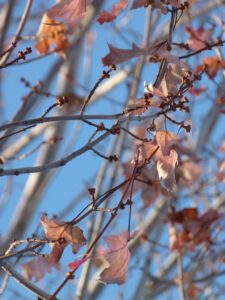
Trungpa Rinpoche liked to use the word “richness” to describe the phenomenal world. He didn’t mean something we ordinarily might think richness to mean—like some monarch’s florid throne room—but any situation. I’d bet if he’d gone to the Sahara, he’d still see a “rich” landscape–all that vast emptiness of sand and sky. He’d call a sewer “a rich situation,” due to the strong odors, its hues and textures, the immediacy of what we normally try to avoid.
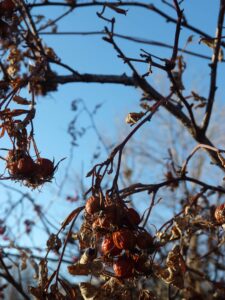
There’s some sense here of knowing/ feeling into/ cognizing space itself as a panoply of textures and spontaneous expression. Does it have to be something that we normally “like” in order to be rich and beautiful, to say what it has to say? It becomes the artist’s task to recognize this beyond the culturally or personally conditioned. This is where we get a glimmer of how an artist can be of considerable value to a society. The artist’s eye sees either things we’ve never seen or what’s in front of our eyes—which can amount to the same thing.
Chogyam Trungpa breaks perception down into experience, emptiness, and luminosity; these are identifying labels for sacred outlook, or seeing the world purified of divisive concept.
Experience reflects preconceptual immediacy, perceiving before any discursive consciousness gets started. Trungpa Rinpoche: “White is white and black is black. There is a kind of exuberant energy that goes along with the perception. You actually experience something as though you were it….It’s that kind of direct experience without anything in between.”

Emptiness is “the absence of things as they are,” which means “things have their space; they always come with a certain sense of room….overcrowdedness is room, in some sense, because there is movement, dance, play.”

Luminosity “is a sense of sharp boundary and clarity that does not have a theoretical or intellectualized reference point. It is realized on the spot within spaciousness. If there was no space it would be unfocused; there would be no sharpness.”
 So, from this point of view, taking pictures becomes a way of sensing into perception itself, which, if you do it right, challenges and exhilarates the viewer. Since the artist/photographer becomes effaced in the act of direct perception, then viewers have some hope of gleaning into that experience themselves. The space experienced within that crystallized perception transmits in a felt way to the viewers. That space hums with some some kind of form, some luminous voltage, precisely delineated.
So, from this point of view, taking pictures becomes a way of sensing into perception itself, which, if you do it right, challenges and exhilarates the viewer. Since the artist/photographer becomes effaced in the act of direct perception, then viewers have some hope of gleaning into that experience themselves. The space experienced within that crystallized perception transmits in a felt way to the viewers. That space hums with some some kind of form, some luminous voltage, precisely delineated.
Beyond this, I have trouble saying much more about it. It’s easier to take pictures.
Reed Bye and I will be having a public conversation on these issues next weekend at the Boulder Shambhala Center, particularly as dharma art concerns poetics. In the literary realm, there’s a long effort to fit kinds of writing into schools, to put it into or exclude it from “the Canon,” or to determine its value based on whether it’s generated from non-white ethnicity or non-hetero gender sources. I’m merely grazing the surface of how complicated this gets, and what’s allowable or what’s not.
Vincent Van Gogh sold exactly one painting in the course of his lifetime to…his brother. Van Gogh, if you’re at all familiar with his philosophy of art, had an exceptionally pure view of what he was doing—he cared only about what he could come to on his canvas, and pursued that with heartfelt devotion. It was for him clearly a spiritual act. He’d likely be astonished to learn that his paintings now sell for millions of dollars, though the faith he had in the value of his effort as an artist seems absolute. He (and others like him) had to shift what art was and how it was seen before anyone could comprehend what happened when he put paint to canvas. Literally, I think, people couldn’t see what he was painting or how painting it that way might make sense, showing you how to perceive in a dynamic, living, and fresh way.
 From the position I’m taking here, that the phenomenal world has an artfulness that pre-exists any philosophy of art, it becomes a matter of cutting in the edges around what you’re seeing so that someone else can see it and, perhaps, value it, too. I suppose there’s some loneliness that comes with the artistic process—will others see what I see and feel what I feel? That’s hard to say, especially if you’re not working in formulaic, familiar patterns. People see things in their own way, no matter what you might do or intend. That always seems true.
From the position I’m taking here, that the phenomenal world has an artfulness that pre-exists any philosophy of art, it becomes a matter of cutting in the edges around what you’re seeing so that someone else can see it and, perhaps, value it, too. I suppose there’s some loneliness that comes with the artistic process—will others see what I see and feel what I feel? That’s hard to say, especially if you’re not working in formulaic, familiar patterns. People see things in their own way, no matter what you might do or intend. That always seems true.
But there’s some sense of an artist’s dogged exploration that resonates as well with the meditator’s avocation. You might be one of those people who can produce quality art or meditative states with little effort, but such people are rare. Most of us have to train. For people who meditate, in the sense I understand it, practically the first thing you must give up is what you expect to achieve. You’re stuck instead with what’s already there in your actual mind, not some beautiful, mystical thing you’re hoping to see that will avoid all the messiness. It’s usually that very preconception that keeps you from seeing what you most need to.
Not valuing where we are right now, we don’t see the brilliance of it. That’s usually thanks to our minds so clogged with wants and needs and theories and advertised promises of all kinds that it’s hard to appreciate what’s right here, right now. But frankly, without surrendering to where you are, it’s hard to see anything accurately at all. Beauty must be somewhere else if you can find no appreciation in who and where you are. Not seeing the world around you, you don’t feel its mystery, its organic chaos or its spontaneous elegance. And what I’m saying here is that you don’t necessarily have to look too far. It’s a matter of opening your eyes.

(If you want to see a much bigger batch of these photos from Nov. 26th, you can link here to my Facebook page.)

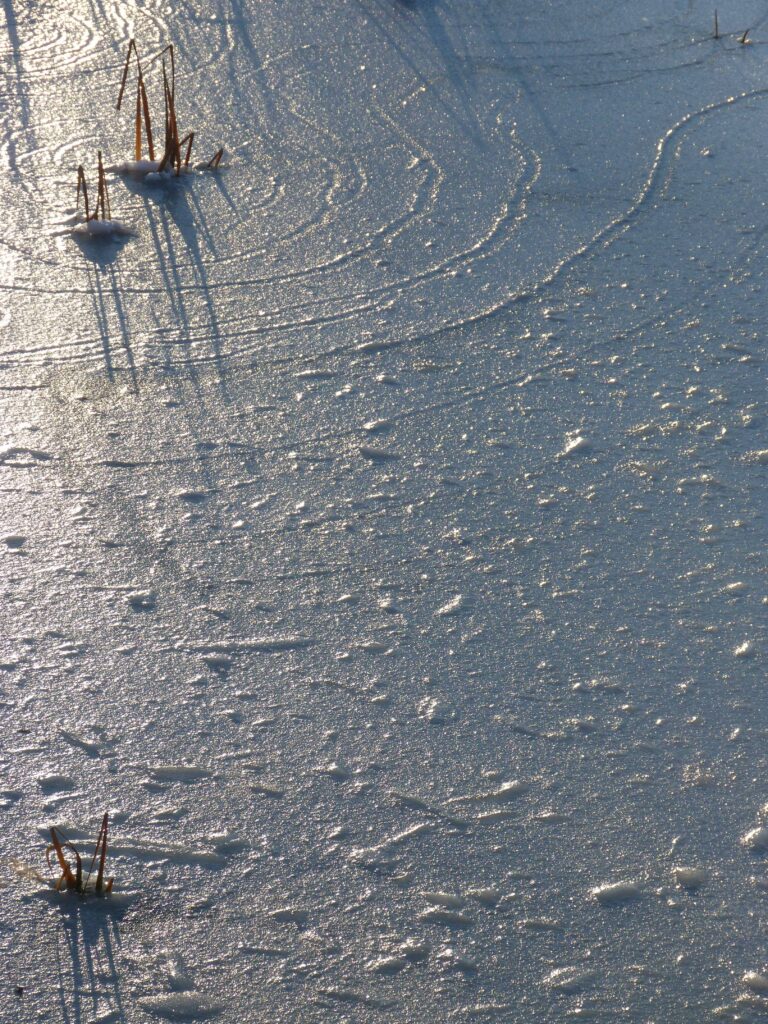
True perceptions… and art critique…
Thank you for capturing the quality of light and space I associate with Colorado, the high, bright crispness of the air, and even as I have been “suffering” in the dark canyons of the Manhattan of my mind, reminding me there is an elegance in all of it.
Gary’s photography is new for me this year and is quite fresh. I feel it in my heart when I look at his photographs. I wonder if part of this is because I know Gary, and find myself imagining standing in his shoes while he shoots.It seems we are subject to and drawn to similar feelings through seperate eyes and our own distinct perceptions.
The emptying of one’s self or mind Gary speaks of seems to be my cast and I feel it is how what I experience is so impactful in way of the impressions I feel from life. By opening myself to the moment of my thoughts, actions and reactions I experience varying degrees of discovery, resonance and participation, in that I share this with viewers and/or readers, giving chance for them to experience my perspective. This I feel is relative to timing on both our parts and as well the subject photographed. What I mean is, where is the subject in its journey, where am I as the photographer in my journey, including my mood while shooting, and the viewers point of their journey and their mood the moment of their viewing.
All we have as artists, writers, earthlings among the brilliant night and day is our perspective, and the ability to bring that perspective into view..
It is said that photography is as simple as point and click, yet as often as not the result doesn’t match what it is I see, so yes, whatever appears in the print has it’s own unyielding artistry, in it’s own unending journey, but when shooting I strive to collect on film what I see and to express how this makes me feel. As well I strive to objectivity allowing the subject to be seen without my perspective, so that, the color doesn’t merely reflect toward me, but exists on its own.
To capture a leaf’s final moments upon a stem of a tree so planted and growing into the sky yet bowing to the ground in reaching for the earth and water, I reflect on the opportunity I find myself to be in, finding every photograph a once in a lifetime chance moment, never to be replicated, and discovery, rather than expression.
Gary’s photography is new for me this year and is quite fresh. I feel it in my heart when I look at his photographs. I wonder if part of this is because I know Gary, and find myself imagining standing in his shoes while he shoots.It seems we are subject to and drawn to similar feelings through seperate eyes and our own distinct perceptions.
The emptying of one’s self or mind Gary speaks of seems to be my cast and I feel it is how what I experience is so impactful in way of the impressions I feel from life. By opening myself to the moment of my thoughts, actions and reactions I experience varying degrees of discovery, resonance and participation, in that I share this with viewers and/or readers, giving chance for them to experience my perspective. This I feel is relative to timing on both our parts and as well the subject photographed. What I mean is, where is the subject in its journey, where am I as the photographer in my journey, including my mood while shooting, and the viewers point of their journey and their mood the moment of their viewing.
All we have as artists, writers, earthlings among the brilliant night and day is our perspective, and the ability to bring that perspective into view..
It is said that photography is as simple as point and click, yet as often as not the result doesn’t match what it is I see, so yes, whatever appears in the print has it’s own unyielding artistry, in it’s own unending journey, but when shooting I strive to collect on film what I see and to express how this makes me feel. As well I strive to objectivity allowing the subject to be seen without my perspective, so that, the color doesn’t merely reflect toward me, but exists on its own.
To capture a leaf’s final moments upon a stem of a tree so planted and growing into the sky yet bowing to the ground in reaching for the earth and water, I reflect on the opportunity I find myself to be in, finding every photograph a once in a lifetime chance moment, never to be replicated, and discovery, rather than expression.
I think the slipperiness of the whole thing is perhaps a big part of what makes photography interesting as an art. Sometimes you do get exactly what you see. Sometimes the photo is better than what you saw. Lots of times it’s other than what you saw, at least other than exactly what you saw. You do your best, I think, to get at what you’re seeing, and then part of the fun ends up being whether you got it or not, or whether what you got remains interesting in some way. I suppose there’s some level where you simply can’t efface the subjective mind holding the camera, but then it’s all about what that mind lets in or discovers in pointing the lens. I do know I tend to be better with a camera the calmer and clearer my mind happens to be.
Slippery is a good way of putting it. Its like we’re all there intersecting a moment, and the very next moment our mere breath puts the focal point to a different vantage, that is if the camera is hand held. Light can change at a moment’s notice.
These days my photos are from a smartphone. I don’t know if the image is akin to through the lens or reflected. Back in the day with black and white I kinda was nuts about a through the lens as it shot what I saw, but my reflective lens drove me nuts. I got to where I would look with my eye, then hold the memory, and adjust my stance to correct the angle and shoot blind. Amazingly, my favorite personal photos came from a semi-disposable camera that was reflect.